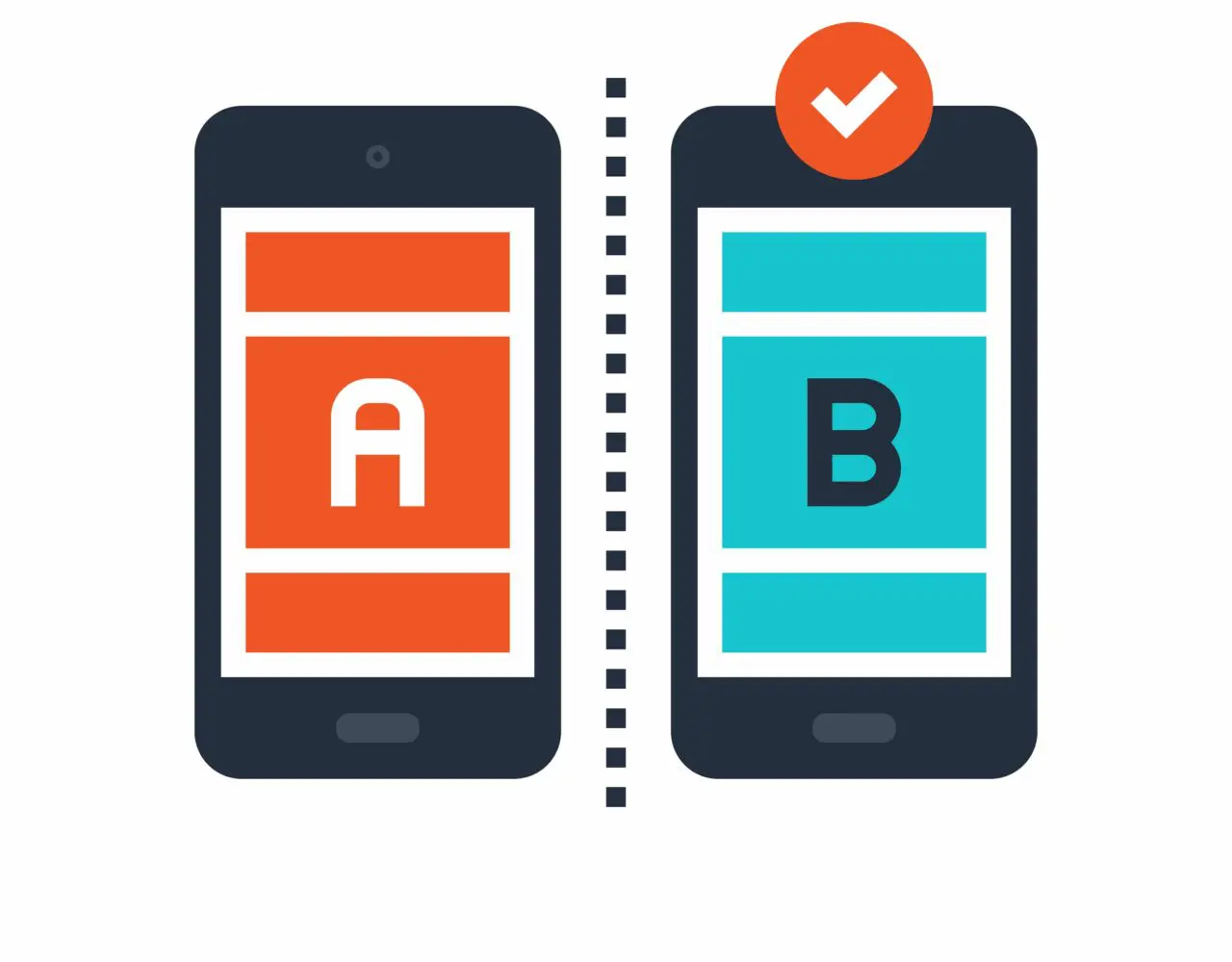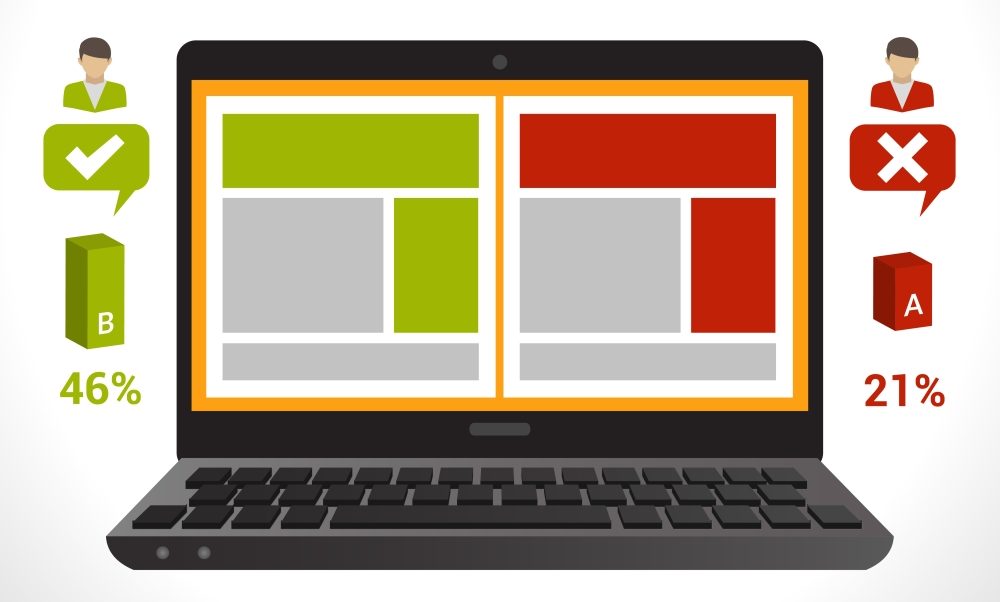If you are in the business of conversion rate optimization, you can't overlook the importance of split testing landing pages. Without split testing, you have no way of knowing what's working and what isn't. Essentially, you're shooting in the dark.
In this guide, we'll take a close look at what split testing is, why it's important, and–most importantly–how to do it.
What Is Split Testing?
Also known as A/B testing, split testing landing pages is a straightforward method of fine tuning your website to ensure that every page and post is performing at its best. It involves applying the basic principles of the scientific method toward web design. You identify the variable that you want to test, measure the results, and make informed decisions based on your discoveries.
For example, let's say you have a client who is a plumber. You are running PPC ads to a landing page for Emergency Plumbing Services. To make the most of their ad spend, you want your page to convert as many visitors into sales as humanely possible. So you decide to split test, starting with the lead capture form.
You create two versions of the landing page. They are nearly identical except one includes a phone number and a lead capture form and the other includes just a phone number. You send half the visitors to one page and the rest to the other, discovering that the phone number only page converts at 40% while the one with the form only converts 25% of visitors.
From there, you make the informed decision to eliminate the contact form altogether and then split test a new variable, like the headline.
And so on and so forth, your tests continue until you've made a series of data-driven choices about landing page design that bring your client the best bang for their buck possible.
How To Split Test
If you can accept the usefulness of split testing landing pages, let's get down to how to actually do it. Here's a step-by-step process to follow.
1. Decide What Pages You Want to Test
You can't split test everything. Unless you've got a very small website, there are just going to be too many pages and posts to tackle them all at once. So, you'll have to make strategic decisions about where to start. Consider the following when making your list:
Choose pages that have more traffic. The pages that are getting the most traffic, whether organic or paid, are going to be at the top of your list to prioritize. Not only will you get results much faster, but these are also the pages that have the most potential value to you.
Choose pages with a clear user intent. A service or product page is going to attract visitors with a more profitable intent that an informational blog post. Therefore, starting with this type of page often provides a faster path to more sales. If your overarching strategy is more aimed towards building your list, though, choosing the blog post may be the right choice for you.
Choose pages that are underperforming. If you have a page with a decent amount of qualified traffic that just isn't performing as well as others, it's a prime target for A/B testing. There is an upper limit on how far you can push your conversion rate as well, so if you start with underperforming pages, you are less likely to get frustrated when your efforts aren't particularly rewarding.
2. Decide What Variables to Test
Once you've got a list of pages that you want to test, it's time to choose the variables you are going to be experimenting with. Go with your gut to get started by choosing elements that you think are important for your audience, but don't be afraid to think outside of the box. For example, HubSpot found that their contact form performed 22% better when it was laid out in two columns instead of one.
Here are some ideas for variables to consider when split testing landing pages:
- Headline
- Call-to-action text
- Length of copy
- Order of content
- Number of form fields
- Button color
- Images
- Videos
- Product or service descriptions
3. Create Your Landing Page Variations
Now that you've decided what you want to experiment on, it's time to create the variations of your landing page. There are two important things to consider as you go through this step:
Only test one variable at a time. If you change both the headlines and the number of form fields, you'll have no way of accounting for which change actually affects the conversion rate. This is scientific method 101. Instead of going hog wild with changing up variables, test them one at a time. After you find your best converting headline, for example, keep that and then move on to the contact form test.
You CAN try multiple variations at a time. This is an important distinction from the previous point. While you should only test one particular variable at any given time, it is okay to create several different variations of the same variable. So, for example, it's okay to test out three or four different headlines as long as you aren't testing any other variable. Just keep in mind that the more variations you add, the more traffic you'll need to acquire in order to collect accurate results.
4. Launch Your Split Test
To actually start split testing landing pages on your site, you'll have decide how you are going to set it up. There are plenty of options out there. Some page builders, like ClickFunnels and Leadpages, have split test functionality built into the platform. If your website is powered by WordPress, you can use a plugin like Thrive Optimize to integrate A/B tests easily into your existing site.
Tools like these generally serve the dual function of both automatically redirecting your traffic to your various landing pages and also collecting the data and analytics you need in order to decide which one is performing the best.
5. Analyze Your Results
Once you've run enough traffic to your page variations to gather useful data, you can take a look at it all and decide what changes, if any, you need to make. It may be that your original version is the best performing of them all. This doesn't mean that your time spent split testing landing pages was a waste. You never would have known if you didn't test, after all.
Don't be surprised if the results completely baffle you. Sometimes your audience behaves completely differently than expected. One test, for example, revealed that visitors to one fitness club landing page preferred a straightforward informational headline to a more engaging and creative one.
6. Test, Test, and Test Some More
Conducting a single test is never enough, of course. Once you've increased your conversion rate by optimizing one variable, you can go on to test others. Eventually, you'll get to a point where you are seeing diminishing returns on your efforts. At that point, it's time to choose another page and start the process all over.
There will always be more split testing for you to do. Take it one step at a time and you will see your conversions grow over time as your website becomes more and more laser targeted to your audience's needs.






